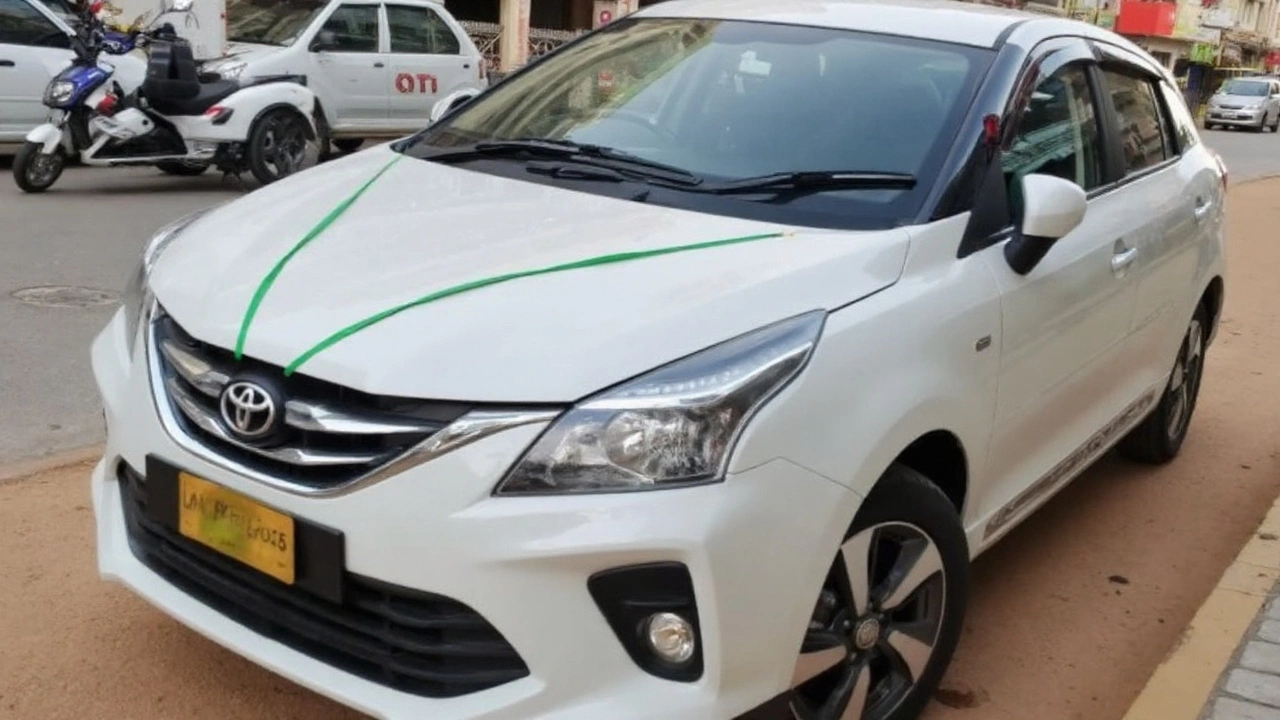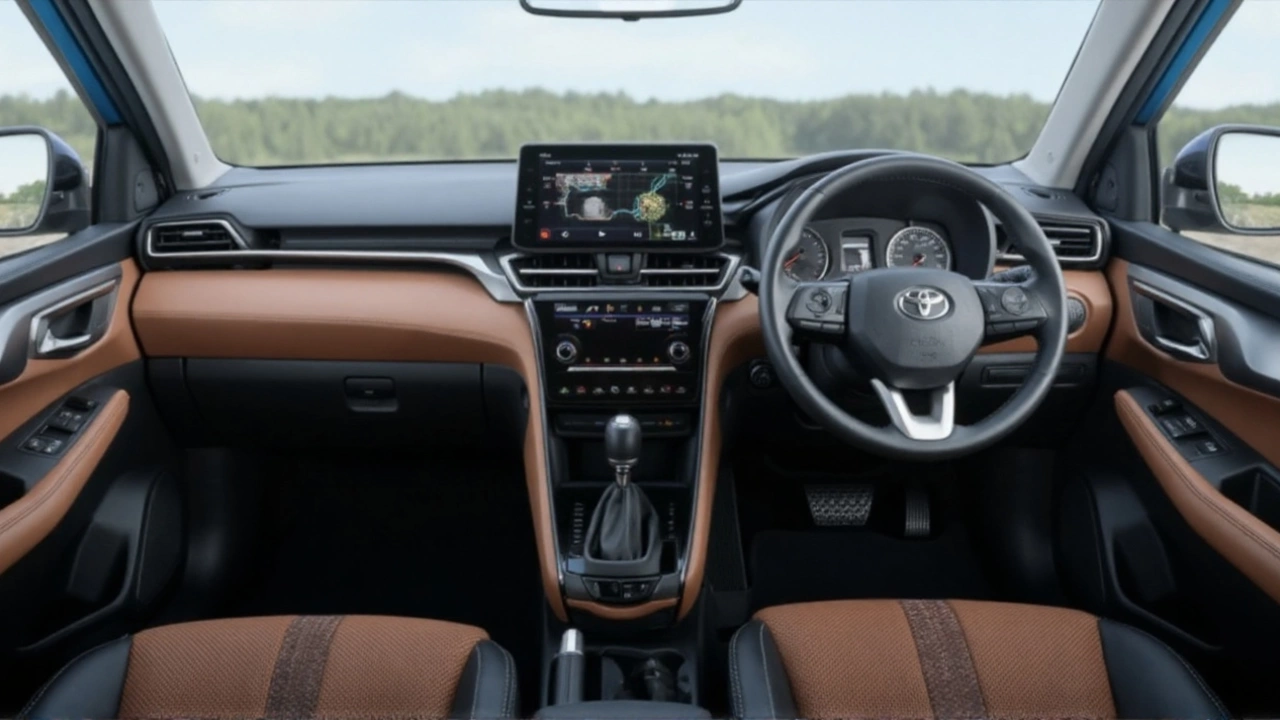Toyota Glanza makes six airbags standard; Prestige Edition launches with price starting under ₹7 lakh
 Aug, 25 2025
Aug, 25 2025
Six airbags across the range, plus a new look
Toyota has turned a safety feature into a headline. Every Toyota Glanza variant—E, S, G, and V—now gets six airbags as standard. That instantly makes it one of the least expensive cars in India to offer full airbag coverage right from the base model. The move started without any immediate price bump, and it signals a clear push: make advanced safety feel normal, not optional.
This matters because most entry-level hatchbacks still reserve side and curtain airbags for higher trims. By baking them into the entire lineup, Toyota is aiming at families upgrading from older cars and first-time buyers who don’t want to trade safety for price. It also stacks well against rivals that promote six airbags—but often only on selected variants.
Toyota is also rolling out a limited-period Prestige Edition. Think of it as a factory-sanctioned cosmetic makeover rather than a mechanical update. The package adds premium door visors, body side molding with chrome and black accents, rear lamp garnish, chrome bits for the ORVMs and fenders, a rear skid plate, illuminated door sills, and a lower grille garnish. These are dealer-fitted accessories, so you get the look without voiding warranties or hunting the aftermarket.
Under the hood, nothing changes—and that’s not a bad thing. The Glanza continues with its 1.2-litre petrol engine making 90 hp, paired with either a manual gearbox or an AMT. It’s a proven setup aimed at efficiency and low running costs. If you’re chasing even lower fuel bills, the CNG variant remains the most frugal pick.
Fuel efficiency numbers are solid for the class: up to 22.94 kmpl for the AMT and 30.61 km/kg on CNG (as claimed). These figures, alongside routine service intervals and wide dealer support, keep ownership costs predictable—key for buyers in both metro and tier-2 markets.
Safety kit doesn’t end with airbags. ABS with EBD is standard, as are ISOFIX child-seat mounts and a tire pressure monitoring system. Add in reversing aids like a camera and sensors, and the package feels complete for a city-first hatchback. Toyota also lists ADAS features, giving the Glanza a tech hook in a segment that’s been slowly moving beyond basic safety.

Prices, trims, features and what it means for buyers
Prices still start below the psychological ₹7 lakh barrier. The base E variant is priced at ₹6.9 lakh (ex-showroom, Delhi), and the line tops out at ₹10 lakh for the most feature-loaded version. Petrol manual variants sit between ₹6.9 lakh and ₹9.82 lakh. AMT versions stretch from ₹8.34 lakh to ₹10 lakh. If you want CNG, expect ₹8.69 lakh to ₹9.72 lakh depending on trim. In August 2025, Toyota adjusted prices on the E, S, and G trims by up to ₹12,000—largely a tidy correction after the safety upgrade rollout.
Here’s the quick snapshot buyers ask for at showrooms:
- Six airbags now standard on E, S, G, V
- 1.2L petrol, 90 hp; manual and AMT options
- CNG available for lower running costs
- Fuel efficiency: up to 22.94 kmpl (AMT), 30.61 km/kg (CNG)
- Safety: ABS with EBD, ISOFIX, TPMS, reversing camera; ADAS features listed
- Tech and comfort: 9-inch touchscreen with Android Auto and Apple CarPlay, heads-up display, 360-degree camera, automatic climate control, push-button start/stop, rear AC vents, Toyota i-Connect
The feature set is familiar to anyone who’s looked at premium hatchbacks lately, but some items still stand out. The heads-up display and 360-degree camera remain rare in this price band, and they genuinely help in tight parking and crowded city driving. Toyota’s connected suite adds remote functions and alerts, which many buyers now treat as must-haves, not luxuries.
On the road, the petrol-AMT combo caters to commuters who want ease without the price jump of a full automatic. AMT shifts are more polished than early versions, though keen drivers will still prefer the manual for smoother control in stop-go traffic. The CNG variant is about math: higher upfront cost, lower per-kilometre spend, and a calmer pace. It pays off for people with long daily runs or fleet users who clock serious monthly mileage.
What about the Prestige Edition? It’s for buyers who want a bit more presence without jumping trims or visiting aftermarket accessory shops. Because everything is dealer-fitted, fit-and-finish stays consistent, and you don’t risk compatibility surprises. No engine tweaks, no suspension changes—just a sharper look and added protection for high-touch areas.
Ownership terms are straightforward. Toyota offers a standard 3-year/100,000 km warranty, extendable to 5 years/220,000 km. There’s 24×7 roadside assistance, a 60-minute express service option at select outlets, and flexible finance plans to soften the entry barrier. This support matters as much as headline features, especially in smaller cities where service speed and parts availability can make or break the purchase decision.
The sales picture has been choppy. Toyota sold 2,938 units in June 2025, a 38 percent drop for the month. May, however, saw a 15 percent month-on-month rise to 4,753 units. This volatility isn’t unique to the Glanza—discount cycles, model year rollovers, and new launches can push shoppers to wait or switch. With six airbags now standard and a fresh edition in showrooms, Toyota will hope for steadier demand in the festive lead-up.
Where does the Glanza sit among rivals? It shares its fundamentals with the Maruti Baleno, but Toyota leans on a slightly different feature mix and the brand’s service experience to stand apart. Competitors like the Hyundai i20 and Tata Altroz bring strong design and feature lists, while the new-gen Maruti Swift chases driving fun and efficiency. In that crowd, the Glanza’s pitch is clean: safety now starts at the base variant, tech is generous, and running costs stay friendly.
If you’re picking a variant, start with how you drive. Mostly urban, light highway work, and you want convenience? The AMT makes sense. Daily long-distance runs with fuel bills that keep you up at night? CNG pays back over time. On a tight budget but won’t compromise on safety? Even the E and S trims now cover the essentials with six airbags and core electronic aids.
Will the price adjustment sting? A bit, for buyers who were eyeing the lower trims right before the August change. But stepping back, the value equation holds. You’re getting a safety upgrade most cars at this price don’t offer across the board. You also keep a warranty and service net that removes much of the risk first-time buyers worry about.
There’s also a policy angle. India mandates dual airbags, but six airbags across a lineup—especially starting under ₹7 lakh—hasn’t been the norm. This move will add pressure on rivals to match the spec at the entry point or expand six-airbag coverage beyond top trims. We’ve seen this game before with ABS and rear parking sensors. Once a big brand normalizes a feature, the market follows.
For Toyota, the bet is simple: safety sells if you don’t make buyers pay through the nose for it. For shoppers, the decision gets easier. You don’t have to climb the variant ladder just to feel protected, and you don’t have to skip tech to stick to a budget. The Glanza was already a sensible buy; with six airbags standard, it’s now a safer one from the moment you step into the showroom.
Expect dealerships to push the Prestige Edition during the launch window—it’s a tidy add-on for those who want a more upmarket look and some scuff protection. If you’re price-sensitive, compare it against individual accessories and check the final on-road difference. Either way, you’re not sacrificing core value for cosmetics.
The bottom line for the segment is clear. The Glanza is raising the safety floor without inflating the starting price beyond reach. For parents teaching a teenager to drive, young professionals upgrading from a scooter or an old hatch, or families adding a second car, that changes the conversation. The base car is no longer the bare car. And that’s progress worth applauding—quietly at the dealership, and loudly on the spec sheet.